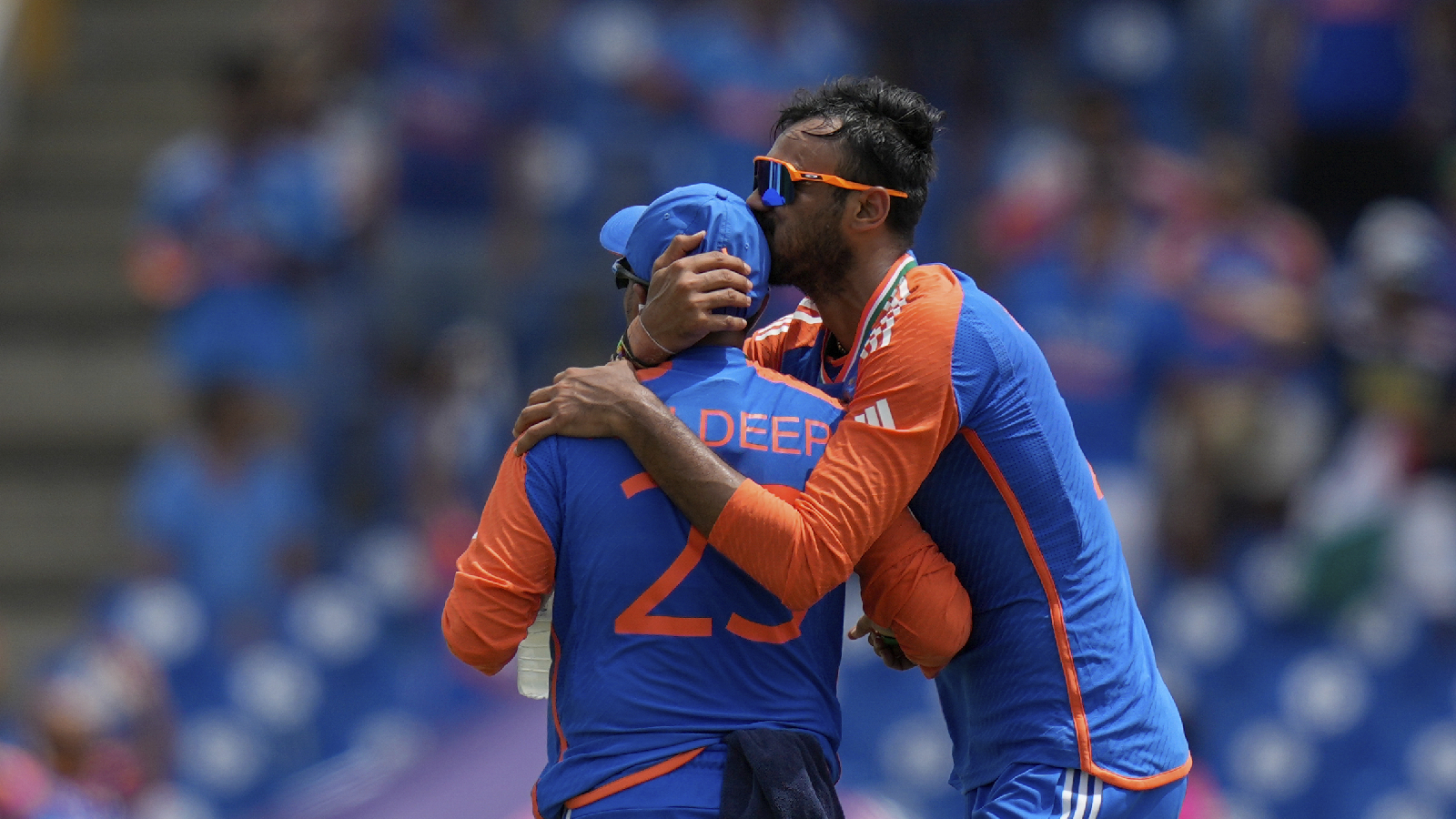


The glare of Rohit Sharma was more eloquent than the words that followed. “Why not four spinners?” It meant, to the question “Why four spinners?” He would then explain: “I don’t want to go into details on this. I definitely wanted four spinners. There are technical aspects involved in this. I won’t reveal it now,” he said in the press conference before boarding the flight to New York.
In hindsight it was a no-brainer. The Caribbean islands have been a familiar shore for Sharma and Co, and they knew the pitches would get lower, slower and turn as the tournament progressed. Four and a bit weeks later, the decision has turned out to be a masterstroke, the difference between India and the rest in several games. If India’s pace trio had grabbed most of the bouquets in the group games, the spin trio had spread their wings and fluttered in the latter games of Super Eight and the semifinal.
An odd trio they make. They are exclusively left-handed. Axar Patel and Ravindra Jadeja preach the semi-orthodox craft, though they are different, in their builds, release points, pace modulation, preferred lengths, variations and thought processes. Kuldeep Yadav is an outlier, who confounds with his wristy mysteries. Within the broad spectrum of left-arm spinners are three different worlds. It would have been tempting to swap one of them (possibly Jadeja or Patel) with the leg-spinner Yuzvendra Chahal. But Sharma and the team management resisted the temptation to revert to the type.

But the operative part is how intelligently Sharma has used them, knowing when, where and how to use them. Yadav is the designated wreck-ball, handed the freedom to be expansive, even a bit audacious. He takes the nature of the surface out of the equation, and often he gets the freedom to choose his ends, depending on which side the cross-wind is blowing, so that he could maximise the drift he produces. It’s an unspoken pact that he cannot freeload batsmen with pressure-release balls. The fields are often aggressive, and he has repaid Sharma’s faith with unwavering consistency (10 wickets at 9.40; economy rate of 5.40). Accuracy and discipline allied with drift and dip (even though he doesn’t flight the ball as extravagantly as he used to in the past), have stupefied batsmen. Glenn Maxwell would have nightmares of the wrong’un that devoured him in St Lucia. On the flattest of pitches, he was the deadliest of the spinners. Sharma calls him one of his two “gun spinners.” The other one being Patel.
The left-arm spinner is his man for all seasons. He could juggle multiple roles; bowl in the powerplay as he did against England, strangle batsmen in the middle overs, toggle between strike and support bowler casts. Of all his spinners, Patel hits the stumps the most, he is the smartest exponent of using the crease and varying the releasing points. So, as early as the fourth over in the England game, Sharma threw him the ball. Jos Buttler had just slammed Arshdeep Singh for three fours, but Patel took one ball to extinguish England’s biggest flicker in the chase.


The ball was not a spectacle. Patel flung in a flat ball from wide of the crease, as though anticipating a reverse sweep. He did exactly that, only the ball dipped and arrived at a much slower pace than Buttler had anticipated. That he toe-ended rather than top-edged shows how early the England batsman was into the short. There was no magic or marvel about the ball, but an irresistible precision, shocking simplicity, a battlecry that you needn’t possess a bagful of variations to gather wickets. He ejected Jonny Bairstow with another simple, non-turning ball that crashed onto the stumps. It’s how Patel steals his wickets. In plain-sight, a daylight heist, when you know what he could and could not, yet let him take the wicket. When batsmen expect his deliveries to skid on, he slows them down, and when they anticipate him to slow his pace, they end up getting beaten by his skid, not so much zip.
The pair’s combination has reduced Ravindra Jadeja into a cameo role. He is no longer the prince of parsimony he once was, a dimension he traded in the journey of scaling Test match peaks. But he offers assurance, guidance and cool head under pressure, apart from his batting utility.

That Sharma could afford both Jadeja and Patel in the eleven is partly due to their batting skills. Suddenly, the team boasts a splendid balance—three spinners, of which two could crunch boundaries, three seamers, of which one could launch lusty blows. Four bowl with their left arm; two with their right. Give Sharma any type of track, he has the ammo to blast opponents. New York was seam friendly, so he unbolted his seamers, St Lucia was a shirtfront, so he harnessed the best of his pitch-transcending bowlers, Bumrah and Yadav; Guyana was spinner-friendly, so pushed Patel upfront. It’s a classic case of a skilled bowling firm marshalled skilfully by a skilful captain. By now, he has eloquently answered the spinner question.